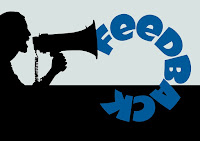How do we know when someone is ready for EBI? Is a high school diploma and a letter from a pastor enough or is there more involved? 1
Corinthians 3:2 says, "I had to feed you with milk, not with solid food, because you weren't ready for anything stronger. And you still aren't ready" (NLT). The Corinthians were "not ready" for engagement in spiritual truth because they were, "still controlled by [their] sinful nature," or living in the flesh (verse 3).
Jesus
also talks about the idea of being ready to engage in truth. John 16:12, ""There is so much more I want to tell you, but you can't bear it now." In addition to the information Jesus presented, he was very concerned that his disciples build life skills that would prepare them for life after his death, burial and resurrection. He often chastised the disciples for their lack of faith (Mark 4:40, Matt 8:26, Luke 8:25). He taught them how to travel (Luke 8). He taught them about humility and service by washing their feet (Matt 26).
We know that people don't have to be perfect in order to understand truth (John 1:8-10) so our task as educators and trainers is to balance the idea of being ready with the urgent need to change hearts and minds with the truth of the Word. A simple phrase used by Christian educators might be helpful here: Our task is to meet students where they're at.
Here at EBI, how do we know when someone is ready to engage
in the very verbal, literacy-heavy learning environment that we have created? Basic
skills such as writing, reading, listening, and critical thinking are not
universal, as we know. When someone engages in a learning environment that they
are not ready for, many things can go wrong. In fact, as we can see from the
above Bible verses it is better for the teacher to go back and re-teach
basic concepts and skills rather than moving into information that the learner cannot handle.
The good news is that we are not the only people having this conversation.
Professors at two and four year colleges around United States have noticed a
considerable increase in the number of students who need remedial college courses that re-teach high school content knowledge. According to Henry and Stahl (2017), "In two-year colleges, nearly 75% of incoming students need remediation in more than one academic area (most commonly Mathematics and English) and enroll in at least two remedial courses to prepare for college-level coursework."
What does this trend mean for us? As has been noted,
students are coming to us less prepared in general for college and less
accustomed to lecture-style teaching. Because we attract a good number of private
and homeschool students from a wide variety of backgrounds, we can't be confident about the type of education that students received prior to arriving here. If we think about the K-12 experience in terms of a pipeline, a lot can go wrong with the fittings, the joints, and the pipe itself on the way to our EBI bucket under the faucet.
On the admissions front, we make every effort to select
students who are ready for college. Not only is engaging in college prematurely
bad for the learner, it can be detrimental for the learning of all other
students at the school. My suggestion is that we step up these efforts by collecting High School grades, ACT and SAT scores and other relevant data from the K-12 experience that could help us make a more informed decision.
On the remediation front, most of us agree that we need more
than just one course that teaches basic writing skills to a small group of "struggling" students. A general education writing course is an urgent need for students who have been out of school for a long time and for the 75% of students entering 2-year schools who need remediation anyways.
Writing skills alone are not enough, of course. There are many other ways in
which students struggle. For example some lack basic social skills,
financial management skills, listening skills, creativity, a thriving spiritual walk with God, time management skills, training in logic, critical thinking, etc.
In the broader culture, education is being re-imagined and re-envisioned it in
the 21st century as K-16 education. This means that basic skills
development such as reading, writing, arithmetic, and scientific inquiry skills
are designed to be continued through a bachelors degree. There's a reason most people are unable to get even a basic job without a bachelors
degree in our society.
What about us here? Do you feel as though our students are
prepared for the rigors of EBI in the same way that they were 10 years ago? 20
years ago? What steps do you take in your classes to ensure that basic skills
in literacy, critical thinking, and social interaction are adequate before you move
on to core content? Are you primarily focused on delivering information or
building life skills? Which skills are most crucial for success at EBI?
Any thoughts are, as usual, very much appreciated.
Works Cited:
Henry, L. A.,
& Stahl, N. A. (2017). Dismantling the Developmental Education Pipeline:
Potent Pedagogies and Promising Practices That Address the College
Readiness Gap. Journal of Adolescent & Adult Literacy, 60(6),
611-616. doi:10.1002/jaal.640















